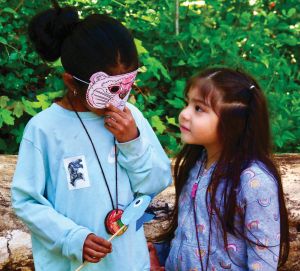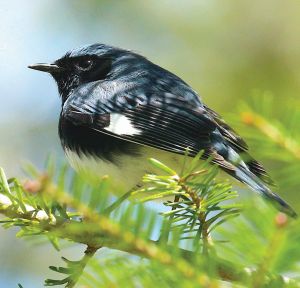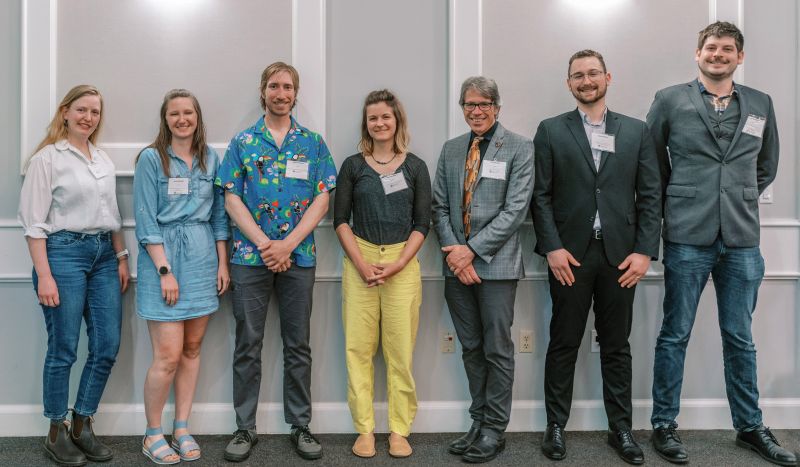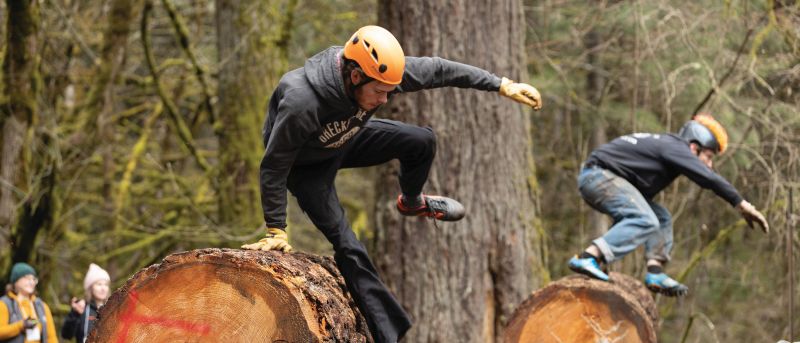FY2023: a record year for research
Bolstered by a big jump in funding from U.S. government agencies, Oregon State University’s research awards in the last fiscal year surged to $480 million, a university record. The College of Forestry also closed out its best-ever year with $25 million in research grants and contracts for FY 2023.

Cristina Eisenberg named a Beaver Research Champion
Cristina Eisenberg, the associate dean for inclusive excellence and Maybelle Clark Macdonald director of Tribal initiatives in natural resources, was named an Oregon State Beaver Research Champion. Eisenberg leads the Indigenous Natural Resource Office, and within it, the Traditional Ecological Knowledge Lab. In partnership with five Sovereign Tribes in Oregon, her team is weaving together Indigenous Knowledge with western science to help the Bureau of Land Management adapt its forests in Oregon to be more resilient to climate change. Eisenberg and Dean Tom DeLuca recently received a $1M grant to work with leaders from the U.S. Forest Service and Tribal Nations to convene a series of Tribal roundtables around the Pacific Northwest. This work is in direct response to President Biden’s Executive Order 14072, which calls for conserving and safeguarding mature and old-growth forests.
Pacific Northwest’s semiconductor and sustainable timber industries to be strengthened by two tech hubs
The White House, through the U.S. Department of Commerce’s Economic Development Administration, announced the designation of 31 Tech Hubs. Oregon State is the only university to lead two. The Pacific Northwest Mass Timber Tech Hub, led by TallWood Design Institute, a collaboration between Oregon State’s College of Forestry, College of Engineering and the University of Oregon, aims to be a global leader in mass timber design and manufacturing manufacturing, with a goal of reducing the construction industry’s carbon footprint and improving housing affordability.
Revision of Pacific Northwest bee ID key to support identification of native pollinators
Associate Professor Jim Rivers, in collaboration with OSU Extension, Oregon Department of Agriculture and Mt. Pisgah Arboretum, developed several bee ID keys to support native bee identification in the Pacific Northwest. The last version of the bee key was published in 1969. Given the growing interest in native pollinator conservation, the new bee ID keys will have a strong impact on bee research in the region.
Forest modeling shows which harvest rotations lead to maximum carbon sequestration
Forest modeling completed on the McDonald-Dunn Research Forest by College of Forestry graduate
student Catherine Carlisle and professors Temesgen Hailemariam and Stephen Fitzgerald, shows that a site’s productivity — an indicator of how fast trees grow and how much biomass they accumulate — is the main factor that determines which time period between timber harvests allows for maximum above-ground carbon sequestration. Over a 240- year projection timeframe, scientists found that for highly productive stands, 60-year rotations with low-intensity thinning at 40 years led to the greatest carbon storage (in the standing trees plus what was removed from the thinning). For stands on less productive sites, they found carbon storage was maximized by rotation periods of 80 years or 120 years.
Update from the H.J. Andrews Experimental Forest
On August 5, 2023, a lightning strike ignited a wildfire within the H.J. Andrews Experimental Forest and Long-term Ecological Research site in Oregon’s Cascade mountains, ultimately burning across 70% of the forest. The fire, dubbed the Lookout Fire because the ignition point was on Lookout Mountain, burned 25,000 acres, incinerating long-term, decades-old research plots and altering study sites.
2023 also marked 75 years of ecological data collection, and 42 years of Long-term Ecological Research (LTER) inquiry. The Andrews, as it’s affectionately known, also celebrated a successful midterm review by the National Science Foundation.
Throughout the challenges and celebrations, the H.J. Andrews community continues to make discoveries about the forest and engage with forest managers, teachers, students of all levels, artists, writers, musicians and many other groups.
Bridging gaps between forestry and engineering to better understand community resilience to wildfire
Wildfire researchers from Oregon State University, including College of Forestry Assistant Professor Chris Dunn, have received $750,000 for multiple projects to advance the science of wildfire risk and resilience. The strategies include embedding a doctoral student in Ashland, Oregon, the site of the largest primarily urban blaze in Oregon history that occurred in 2020; planning a global center for transdisciplinary wildfire research on community resilience; and creating a wildfire risk and resilience graduate program jointly advised by faculty in OSU’s colleges of engineering and forestry.




















